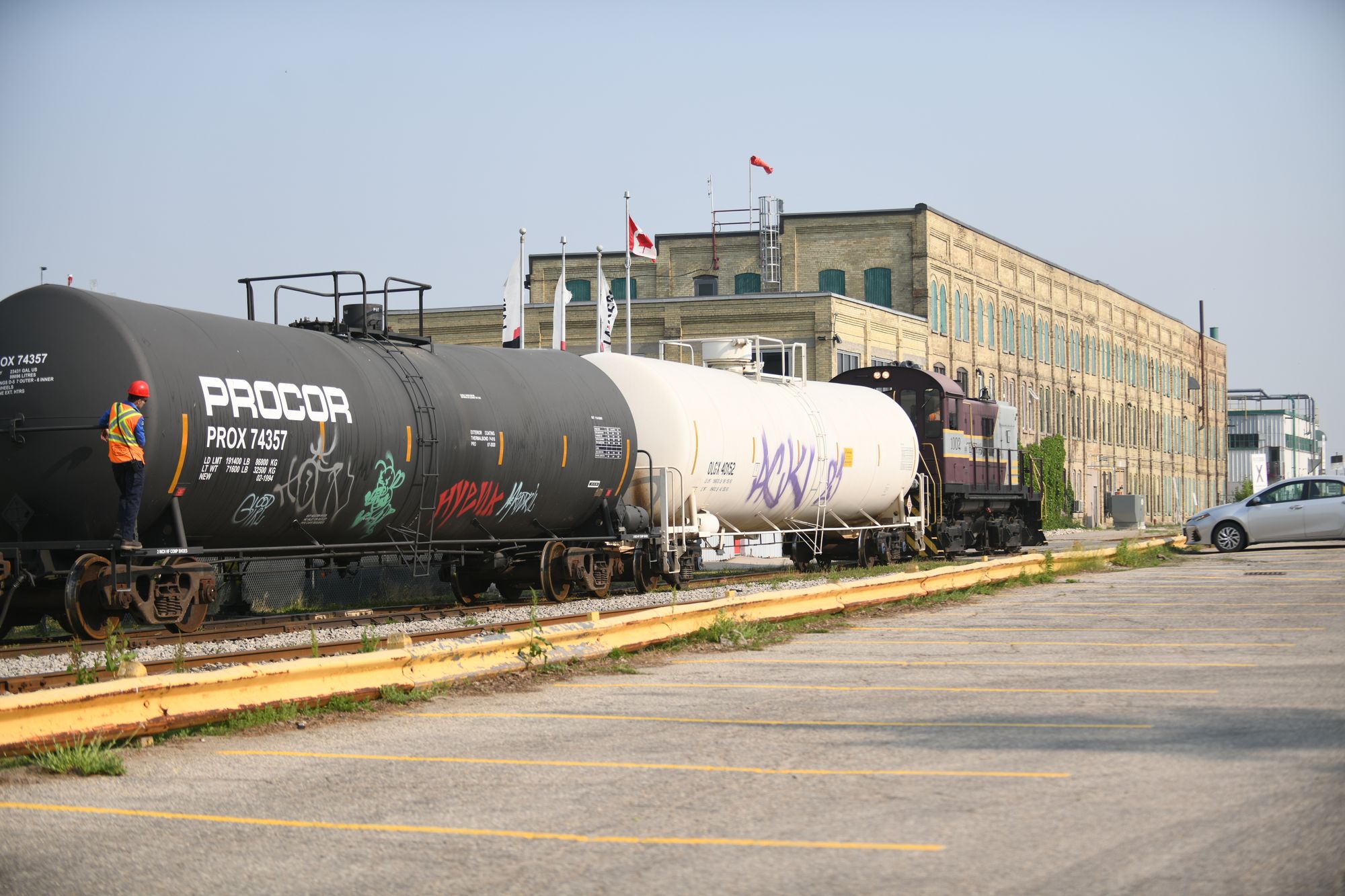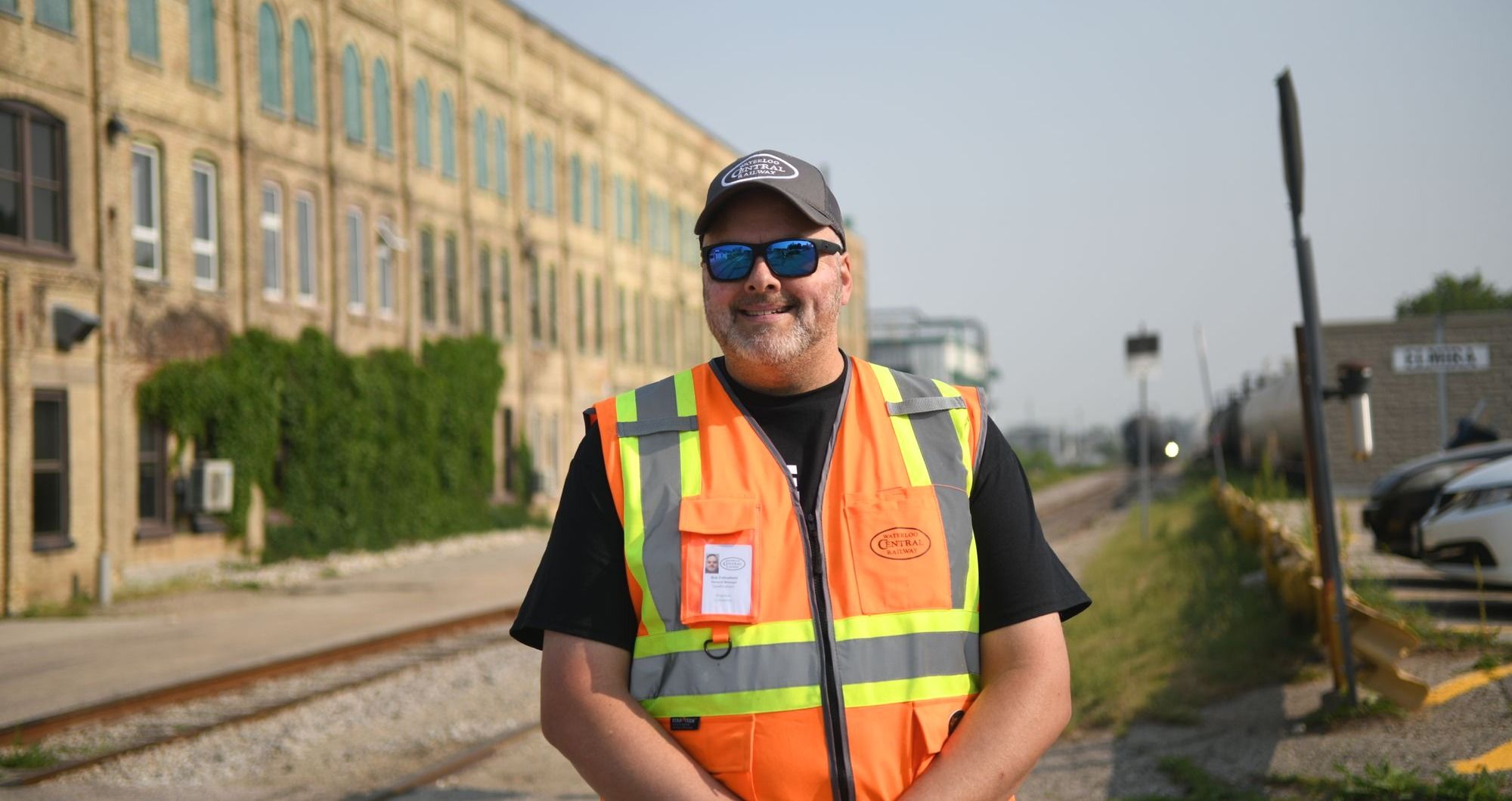Where things used to go bump in the night, now there’s usually silence, the benefit of a deal between the Lanxess chemical plant in Elmira and the Waterloo Central Railway.
The year-long arrangement provides happiness to more than just the two parties.
Since the ION light rail transit system was built, it reduced the amount of time Canadian National Railway can access the Waterloo Spur Railway – a single railway track from Kitchener-Waterloo to Elmira owned by the Region of Waterloo – to the early morning hours before the LRT begins running. The track is used by local industries, including Lanxess, which sits at the end of the line.
“So CN can’t go past St. Jacobs until after midnight, and then they have to come back at 5 a.m. because they use a portion of the same tracks as the LRT. So you can imagine all of a sudden there’s a very short operating window, so CN has to get their train up, has to get past there at midnight and if there’s any issues, respective delay in servicing other customers on the line, because we’re at the end of the line, we had the short end of the stick, right? It wasn’t CN’s issue, it could be a whole variety of issues, but it’s a very tight window,” said Helder Botelho, the head of operations for Lanxess Canada.
“We were struggling with a lot of missed shunting because CN has to move rail cars from various places inside the facility. And they just ran out of time because if they haven’t finished their work by 4 a.m., they have to turn the train around and go back. So lots of rail issues.”
The situation also meant CN staff were shunting rail cars at Lanxess, which is a loud process, in the early morning hours – not ideal for nearby neighbours.
Helder said he decided to connect with Waterloo Central Railway, a non-profit organization based in St. Jacobs that works to restore and showcase vintage trains, and offers tourism train rides on the Waterloo Spur Line between Northfield Drive in Waterloo, the St. Jacobs Farmers Market, the village of St. Jacobs and Elmira.
Botelho said he could have found a way to take care of the issue in-house, but decided to reach out to Waterloo Central.
“There is equipment that Lanxess can purchase to do these movements on their own. Or we thought, ‘Why don’t we get Waterloo Central? They know how to run trains, that’s their expertise.’ They’re a non-profit, so we can help them out. And it also makes things easier for us, because our core competency is manufacturing, not moving railcars.”
Bob Fallowfield, general manager of Waterloo Central Railway, said that the partnership came at a good time, since the pandemic left the organization without funds normally generated by tourism.
Fallowfield said dealing with the red tape for the arrangement took about a year. A big chunk of that was forming a for-profit company to do the work, to be in line with standards set by the tax man.
“Because we’re a non-profit, we basically had to create a for-profit company. We did, and that company is called Waterloo Central Freight Solutions. And it’s a separate company from the non-profit and keeps Canada Revenue Agency happy.
“We’re now using Canadian heritage locomotives that we have restored to move tank cars around at Lanxess in Elmira.”
Workers also needed to undergo Lanxess safety training, Fallowfield said.
Volunteers and employees do the work with the company. They move, or shunt, the railcars around in the early evening or late afternoon , and leave them at the edge of the Lanxess property ready for CN staff to pick them up. The organization trains people on train and rail operations in-house.
The two locomotives used to do the work include the organization’s engine 1001, a Montreal Locomotive Works S-13, which was outshopped in 1959 and built originally for Pacific Great Eastern Railway.
The other is engine 1012, a GMD-1, built by General Motors Diesel Division in London, Ontario and outshopped in 1958.
Fallowfield says the project has been successful.
“It’s typically Monday-to-Friday service, in the afternoon, and it’s a win-win for everybody involved,” he said. “Coming out of the pandemic, it’s been a real boost for us financially. And 100 per cent of the money earned by the freight work goes right back into restoring and preserving heritage Canadian railway equipment.”
Botelho said each railcar missed equals about four trucks’ worth of product. So timely rail shunting makes a difference.
“So there’s a CO2 savings, there’s a road-safety savings, there’s an economic savings, so it’s just a win-win for everyone.”
Fallowfield says it’s a good feeling to see these old locomotives at work again.
“It’s thrilling, and it’s very satisfying. It’s a really cool arrangement to see Canadian Heritage diesel locomotives being used in freight service. These are engines from a bygone era, and here they are moving modern tank cars in Elmira, Ontario at a global leading, chemical plant, industrial lubricant manufacturer. It’s a really cool mix of old and new.”








